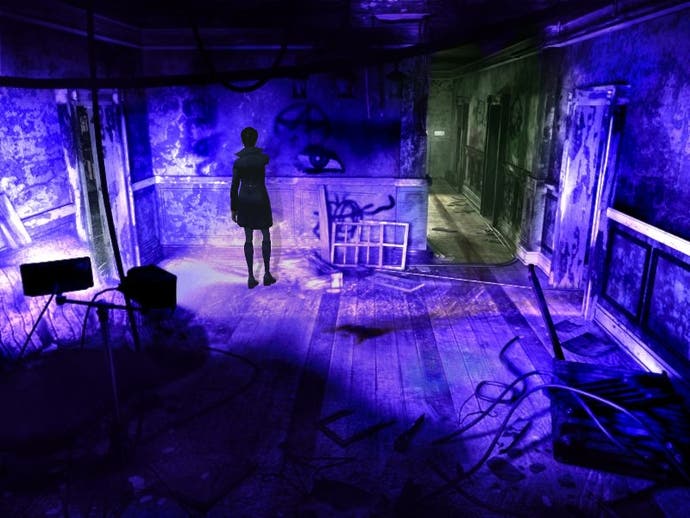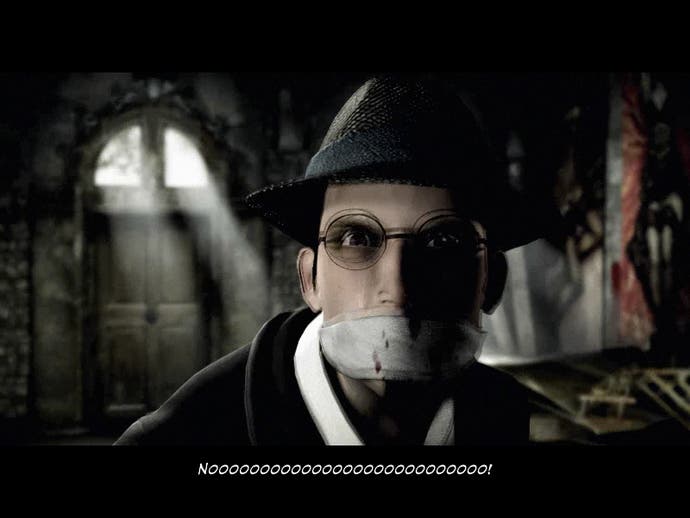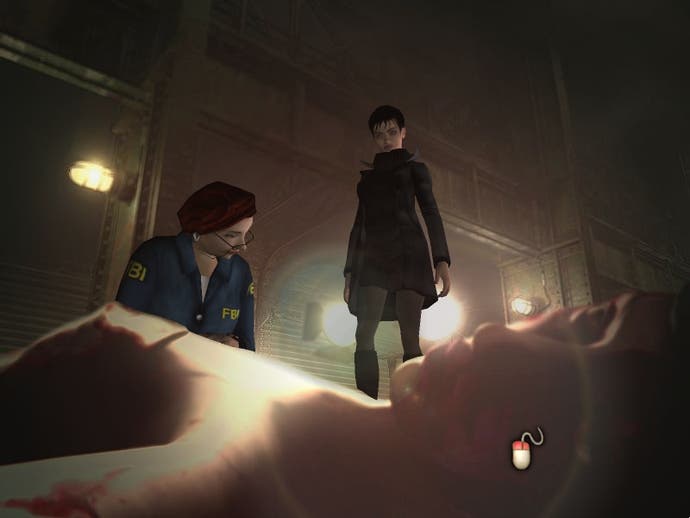Still Life
If life stays still, then the story must be endless...
There's a peculiar thing about adventure game reviews. Aside from the tedious inevitability of the mainstream press attempting some widespread analysis of the entire genre, there comes alongside them the frothing insanity of the adventure gaming specialist press. These poor starving beings wander through their lives wraith-like, long gaunt faces, bony fingers clasping with a rigor mortis grip around any release that might feature some notion of pointing and clicking. Letting these people review adventure games is like letting junkies review heroin. However cut the purity might be, however poor quality, whatever diseases might worm through their bodies as a result of playing, dammit man, it's a hit. Give it a 10.
Adventure games have so much potential. They clearly need to make that next leap forward that has been so glaringly absent for the last decade (it was once the genre that reinvented its interface and ethos every couple of years, ensuring it remained fresh, challenging, and on its toes, and very much of interest to the wider gaming public), and once it's discovered and implemented, our lives will be all the prettier. Until that time, it appears the only possibilities are constant attempts to dig up the skeleton of the past, and drape upon it whatever ill-fitting clothes the developers feel appropriate. In the case of Still Life, these garments are some fairly nice ideas of murder mystery across a broad timeframe.
It all begins in familiar enough territory. You begin playing as Victoria McPherson, a young FBI agent with some manner of mysterious past, and an attic full of emotional baggage. Things begin at an appropriately brutal murder scene, the conditions of the building as gruesome as the mess made of the victim in the bath. In a manner reminiscent of the dreadful CSI games, you're asked to scour the scene using a few forensic tools, which amounts to clicking the inventory items on any of the (eventually) discovered hotspots, until it tells you you're done. It's a troubling start - such interaction abusing the player in the laziest possible way - but finds forgiveness in its sinister results.
Luminescent spray on the walls, combined with dark-light gels over the forensic lamps, reveals ominous warnings written in blood. The lusciously painted backgrounds, replete with haunting graffiti and a degree of grime that makes you want to wipe your monitor clean, provide an evocative mise en scène. The interface may feel like going through the motions (in every sense) but the experience suggests that it might be worth it, just this once more.

The acting is wobbly, although not as hideous as we've come to expect from this field. Most the main characters at least don't make you squirm, apart from (and this is a very big ‘apart from') the black uniformed cop who falls just shy of doffing his cap to you, calling you 'ma'am', and making his way to the back of the bus. Not helpful. But with a story-driven game, at least hearing it spoken doesn't drive you away. And as far as you'll be able to tell for a good long while, it's not a bad story.
The moment it becomes genuinely interesting occurs when Victoria goes to her father's house. In a move that is clearly supposed to give her some sort of April Ryan-like depth, the stilted interaction with her father offers little, but her exploration of the loft offers a lot. Inside is her late grandfather's journal from his days of being a private detective. As she reads her grandfather's tale, the game disappears back in time 70 years, and we take on his role in the 1930s. It becomes immediately apparent that there are some strange coincidences afoot, as you learn of the remarkably similar series of murders occurring long ago in another country.
There, that's a lot of detail about the set-up (cleverly without any spoilers). There's a good reason for this, and we'll get back to it in a bit. For now, we must open the doors of frustration.
Please, if you're an adventure games developer reading this, or you know one you can show this to, please, please, for the love of all that's good, please, think about your damn puzzles. As the game descends from its more promising opening, it reveals itself as the tired old rattling pile of bones it really is. When needing to get across some waste ground, blocked by a dangerous dog, Victoria must move large metal crates into a pathway using a crane; fairly stupid, but nothing when compared to the crane operating challenge. For some reason, those who built the machinery decided that they would not include the more usual key-based on/off mechanism, but instead a series of levers that must be arranged into numerical order, restricted by the need to pass them all along the same gap in the metal. It's embarrassing.

However, this is one of the better puzzles; it's an annoying inconvenience but at least it's easily solved. Others are of a Myst IV degree of random clicking and rotating, hopelessly rearranging your options until, for some unfathomable reason, something somewhere clicks and, say, the sewer door opens. It gets even worse in the entirely irrelevant - we can barely bring ourselves to say it - gingerbread man making puzzle. Your late mother, in her infinite wisdom, left the recipe for these biscuits in some indecipherable gibberish that none could discern without a walkthrough. Sorry, what's that? Why are you suddenly stopping the investigation of a serial killer to do some baking, you ask? You well may.
On the bright side, Still Life really does look gorgeous. The two different time zones are equally well rendered, but each uniquely and delicately detailed. Murder scenes are genuinely quite horrific, and there's a palpable tension generated by the clever art direction and utterly superb cut scenes. The fast and precise cutting reminds the discerning viewer of the nightmarish flashes in '90s horror TV show American Gothic. They fire off a chill, and are something many other developers could do well to study. This, combined with the building intrigue of the story, led us to find ourselves uncharacteristically forgiving of the wretchedly stupid puzzles - even those so game-breaking that they forced us to quit out and find solutions. Which all brings us back to that aforementioned set-up. And leaves us there.
Still Life doesn't have an ending. Not, 'Still Life has a bad ending,' or 'Still Life has an obscurely open ending that left lots of threads loose in a tantalising way.' It just doesn't end. It merely stops.
Let's get that in context: it's a murder mystery. You spend the game seeking the killer, maybe two killers, maybe one with some sort of mystical powers, maybe a killer cucumber from outer space for all the game appears to care. 'How will they bring these threads together?', you may ask yourself. They won't. 'I can't wait to find out how the cases are connected,' you'll ponder. You'll have to. 'Is the boyfriend character who he claims to be?' you might muse at points. Keep musing. 'Are the grandfather's journals telling the whole truth?' you'll want to know.

But Microids couldn't give a crap either way. It's just one big lazy cruel trick that leads you down a path into some tangled woods, and then just walks off. Mumblings on their website mention a follow-up ARG (alternative reality game) that will continue the story. Like hell there will be. It's been out for a while now, and nothing. And even if there were, they'd have no right to do so, what with your having bought a boxed game that makes no such mention of any such thing at any point.
But Still Life will be seized upon by the adventure gaming press. It's an adventure game, after all! Jab that needle in. It looks pretty, has a budget, the voice acting doesn't make you cry, and it's a bit like The Longest Journey and Syberia in the odd fleeting moments. Can we give 11 out of 10? Who cares that it doesn't end, doesn't make any sense, and is riddled with the worst sorts of puzzles? Pass the spoon.
It can never be that we accept such wanton errors as good enough, just because adventure games are thin on the ground. If this is the best on offer, then the genre deserves to be in its frozen state. There's a lot that Still Life does well, but in the same way adventure games were doing things well ten years ago. There is therefore no excuse for it to not manage other basic, fundamental elements when rehashing these decade-old ideas. Still Life gets it half right, and that's why it gets half marks. Bad endings can distort the memory, and it's only fair to remember how we were quite enjoying the story (always despite the puzzles) until it failed to continue. But please understand, the way Still Life loses the other half is incredibly damaging. This is anti-climax in a can, and it's about as helpful for adventure gaming as nailing it into a coffin and firing it into the sun.

